10 Books Published by Arcadia Publishing on AALBC — Book Cover Collage
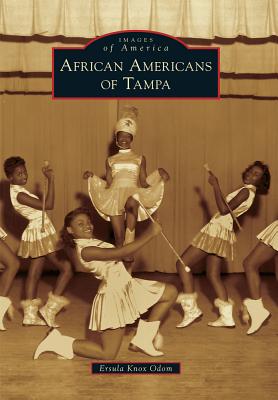 African Americans of Tampa (Images of America)
African Americans of Tampa (Images of America)
by Ersula Knox OdomArcadia Publishing (Nov 24, 2014)
Read Detailed Book Description
Tampa has a fascinating past that has been wonderfully documented with one exception: African Americans. This culturally rich community is virtually invisible in the eyes of history. Tampa’s population exploded during the early 1900s, and the building boom universally required the skills and talents of African Americans, who provided services, labor, and entrepreneurship in a massive form. They played significant roles in everything from Tampa’s wilderness era to its boomtown years and were key players in the first and second Seminole Wars with their Seminole alliance. African American soldiers captured Fort Brooke during the Civil War and fought in the Spanish-American War. Residents have endured Jim Crow, desegregation, and racial unrest yet thrived as entrepreneurs. Black Cubans, as part of the greater African American community, enabled Tampa’s world-renowned cigar industry. The photographs found in this volume clearly illustrate Tampa’s social and productive African American community.
 Tulsa’s Historic Greenwood District
Tulsa’s Historic Greenwood District
by Hannibal B. JohnsonArcadia Publishing (Jan 27, 2014)
Read Detailed Book Description
In the early 1900s, an indomitable entrepreneurial spirit brought national renown to Tulsa’s historic African American community, the Greenwood District. This "Negro Wall Street" bustled with commercial activity. In 1921, jealously, land lust, and racism swelled in sectors of white Tulsa, and white rioters seized upon what some derogated as "Little Africa," leaving death and destruction in their wake. In an astounding resurrection, the community rose from the ashes of what was dubbed the Tulsa Race Riot with renewed vitality and splendor, peaking in the 1940s. In the succeeding decades, changed social and economic conditions sparked a prodigious downward spiral. Today’s Greenwood District bears little resemblance to the black business mecca of yore. Instead, it has become part of something larger: an anchor to a rejuvenated arts, entertainment, educational, and cultural hub abutting downtown Tulsa.
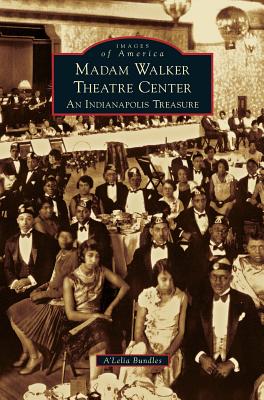 Madame Walker Theatre Center: An Indianapolis Treasure
Madame Walker Theatre Center: An Indianapolis Treasure
by A’Lelia BundlesArcadia Publishing (Oct 14, 2013)
Read Detailed Book Description
As they watched construction of the block-long flatiron building brick by brick throughout 1927, African American residents of Indianapolis could scarcely contain their pride. This new headquarters of the Madam C.J. Walker Manufacturing Company, with its terra-cotta trimmed facade, was to be more than corporate offices and a factory for what then was one of America’s most successful black businesses. In fact, it was designed as "a city within a city," with an African Art Deco theater, ballroom, restaurant, drugstore, beauty salon, beauty school, and medical offices. Generations of African American families met for Sunday dinner at the Coffee Pot, enjoyed first-run movies and live performances in the Walker Theatre, and hosted dances in the Casino. Today, this National Historic Landmark is an arts center anchoring the Indiana Avenue Cultural District.
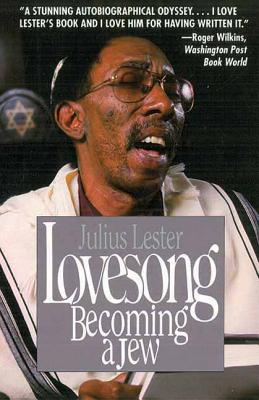 Lovesong: Becoming a Jew
Lovesong: Becoming a Jew
by Julius LesterArcadia Publishing (Aug 01, 2013)
Read Detailed Book Description
Julius Lester was born the son of a black Methodist minister in the south. His book Lovesong is a beautifully written account of his spiritual journey away from the conventions of his Southern heritage and Methodist upbringing, culminating in his personal self-discovery through a conversion to Judaism.
Growing up in the turbulent civil rights era South, Lester was often discouraged by the disconnectedness between the promises of religion and the realities of his life. He used the outlets available to him to try to come to grips with this split and somehow reconcile the injustices he was witnessing with the purity of religion. He became a controversial writer and commentator, siding with neither blacks nor whites in his unconventional viewpoints. He became a luminal figure of the times, outside of the conventional labels of race, religion, politics, or philosophy.
Lester’s spiritual quest would take him through the existential landscape of his Southern, Christian upbringing, into his ancestry, winding through some of the holiest places on the planet and into the spiritual depths of the world’s major religious cultures. His odyssey of faith would unexpectedly lead him to discovering Judaism as his true spiritual calling.
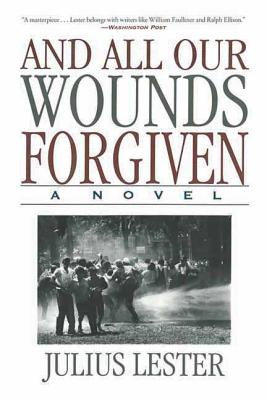 And All Our Wounds Forgiven: A Novel
And All Our Wounds Forgiven: A Novel
by Julius LesterArcadia Publishing (Aug 01, 2012)
Read Detailed Book Description
When John Calvin Marshall graduated from Harvard in 1956, he was prepared for a life of teaching and relative tranquility. But history had another plan for him: here, a veteran author re-envisions the Martin Luther King Jr. story in fearful, exciting, and violent terms. Political and provocative, And All Our Wounds Forgiven is both a compelling political fable and a striking and tender love story about one of this century’s most charismatic black leaders and the two women he loved.
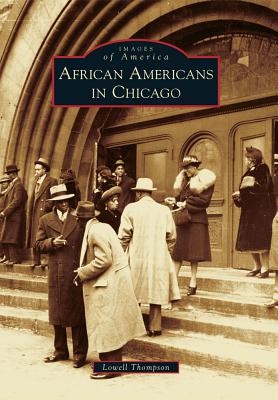 African Americans In Chicago (Images Of America) (Images Of America (Arcadia Publishing))
African Americans In Chicago (Images Of America) (Images Of America (Arcadia Publishing))
by Lowell D. ThompsonArcadia Publishing (Feb 06, 2012)
Read Detailed Book Description
The story of black Chicago is so rich that few know it all. It began long before the city itself. "The first white man here was a black man," Potowatami natives reportedly said about Jean Baptiste Point DuSable, the brown-skinned man recognized as Chicago’s first non-Indian settler. It’s all here: from the site of DuSable’s cabin—now smack-dab in the middle of Chicago’s Magnificent Mile—to images of famous and infamous residents like boxers Jack Johnson, Muhammad Ali, and Joe Louis. Here are leaders and cultural touchstones like Jesse Binga’s bank, Robert S. Abbott’s Chicago Defender, legendary filmmaker Oscar Micheaux, Ida B. Wells, the Eighth Regiment, Jesse Jackson, Oprah, and much more … including a guy named Obama. Here is the black Chicago family album, of folks who made and never made the headlines, and pictures and stories of kinship and fellowship of African Americans leaving the violent, racist South and "goin’ to Chicago" to find their piece of the American Dream. Chicago has been called the "Second City," but black Chicago is second to none.
 African Americans of Petersburg
African Americans of Petersburg
by Amina Luqman-DawsonArcadia Publishing (Jan 14, 2009)
Read Detailed Book Description
The city of Petersburg has distinguished itself as a special place for African American history. African Americans in Petersburg have overcome racial and political obstacles placed in their paths. The city was the site of one of the largest free black populations in the South leading up to the Civil War, and more black soldiers participated in the Siege of Petersburg than in any other Civil War engagement.
The city is the location of First Baptist Church, the nation’s oldest black church; has produced trailblazers in political life, including Virginia’s first black mayor; and is the site of the famous Halifax Triangle, a thriving black business district. This diverse and poignant collection of photographs reveals a heritage rich in entrepreneurial spirit, devotion to church life, and unshakable courage in the struggle for civil rights.
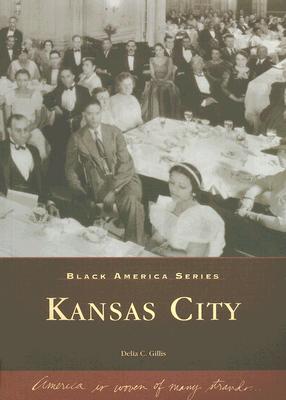 Kansas City
Kansas City
by Delia C. GillisArcadia Publishing (Jan 01, 2007)
Read Detailed Book Description
Since 1803, when York, a slave in the Lewis and Clark expedition, stood on the bluffs overlooking Kansas City, African Americans have contributed to the city’s rich history. Men and women like Tom Bass, Emily Fisher, Sam Sheperd, and Hiram Young built the region in slavery and in freedom. Musicians such as Julie Lee, Bennie Moten, Joe Turner, and Count Basie turned Kansas City into a jazz mecca in the 1920s and ’30s. The professional class made their voice heard with the establishment of the Kansas City Monarchs baseball team, the Kansas City Call newspaper, and election of the city’s first black mayor, Emanuel Cleaver. With over 200 vintage images, Kansas City recreates this beautiful mosaic of African-American community.
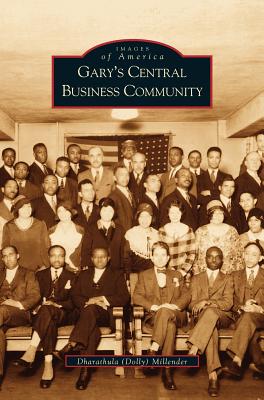 Gary’s Central Business Community
Gary’s Central Business Community
by Dharathula H. MillenderArcadia Publishing Library Editions (Dec 09, 2003)
Read Detailed Book Description
America’s famous steel mill town, Gary, Indiana, was created by U.S. Steel Corporation in 1906. The city quickly developed as a diverse labor pool was drawn to the area by the promise of steady work and greater opportunities. This diversity created distinct neighborhoods and cultural centers, but also brought about a conspicuously segregated Gary. Wealthy steel mill executives plotted the north side of Gary, while newly arriving laborers were relegated to an area south of Ninth Avenue known as the “Patch.” Soon, however, African-American leaders organized the “Central District,” a city within a city for themselves with desirable housing, good schools, and active clubs and community organizations.
 Falling Pieces of the Broken Sky
Falling Pieces of the Broken Sky
by Julius LesterArcadia Publishing (Oct 01, 1990)
Read Detailed Book Description
The author recounts his political and spiritual odyssey during the past ten years, discussing anti-Semitism, James Baldwin’s work and legacy, video games, pollution in space, suicide, the Holocaust, and more
